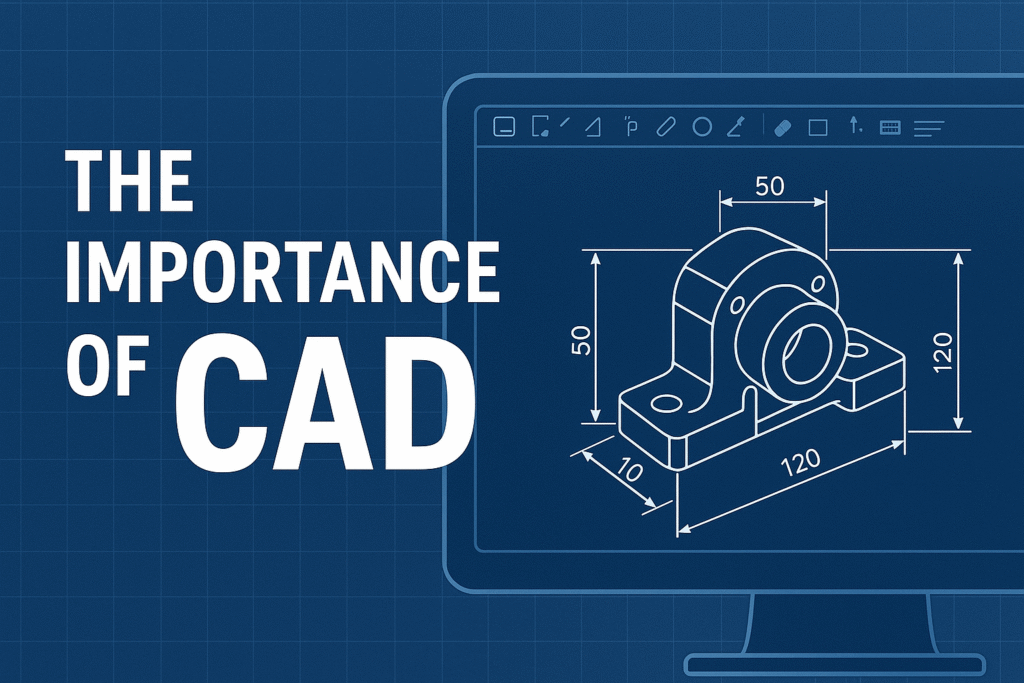In today’s fast-paced engineering and design world, Computer-Aided Design (CAD) has become an essential tool that bridges creativity and precision. Whether in mechanical, civil, electrical, or architectural fields, CAD revolutionizes how ideas are developed, visualized, and executed.
What is CAD?
CAD refers to the use of computer software to create, modify, analyze, or optimize designs. It allows engineers, architects, and designers to produce accurate, detailed, and efficient models — both in 2D and 3D.
Why CAD is Important
- Precision and Accuracy
CAD eliminates human error common in manual drafting. Dimensions, alignments, and geometries are controlled digitally, ensuring flawless designs. - Time Efficiency
Tasks that once took days can now be done in hours. Editing and revising designs become faster, leading to shorter project timelines and improved productivity. - Visualization and Simulation
CAD enables 3D modeling and simulation, helping designers visualize how a product or structure will look and function before it’s built — saving time, cost, and materials. - Documentation and Standardization
CAD software automatically generates detailed drawings, bills of materials, and design documentation that meet industry standards. - Collaboration and Integration
Multiple team members can work on a single project across locations. CAD integrates with CAM (Computer-Aided Manufacturing) and CAE (Computer-Aided Engineering), creating a seamless workflow from design to production. - Cost Savings
Early detection of design errors reduces waste, rework, and material costs — ensuring efficient resource utilization.
Real-World Applications
From designing automobiles, machinery, and electronics to planning urban infrastructure and interior layouts — CAD drives innovation across industries.

No comments yet. Be the first to comment!